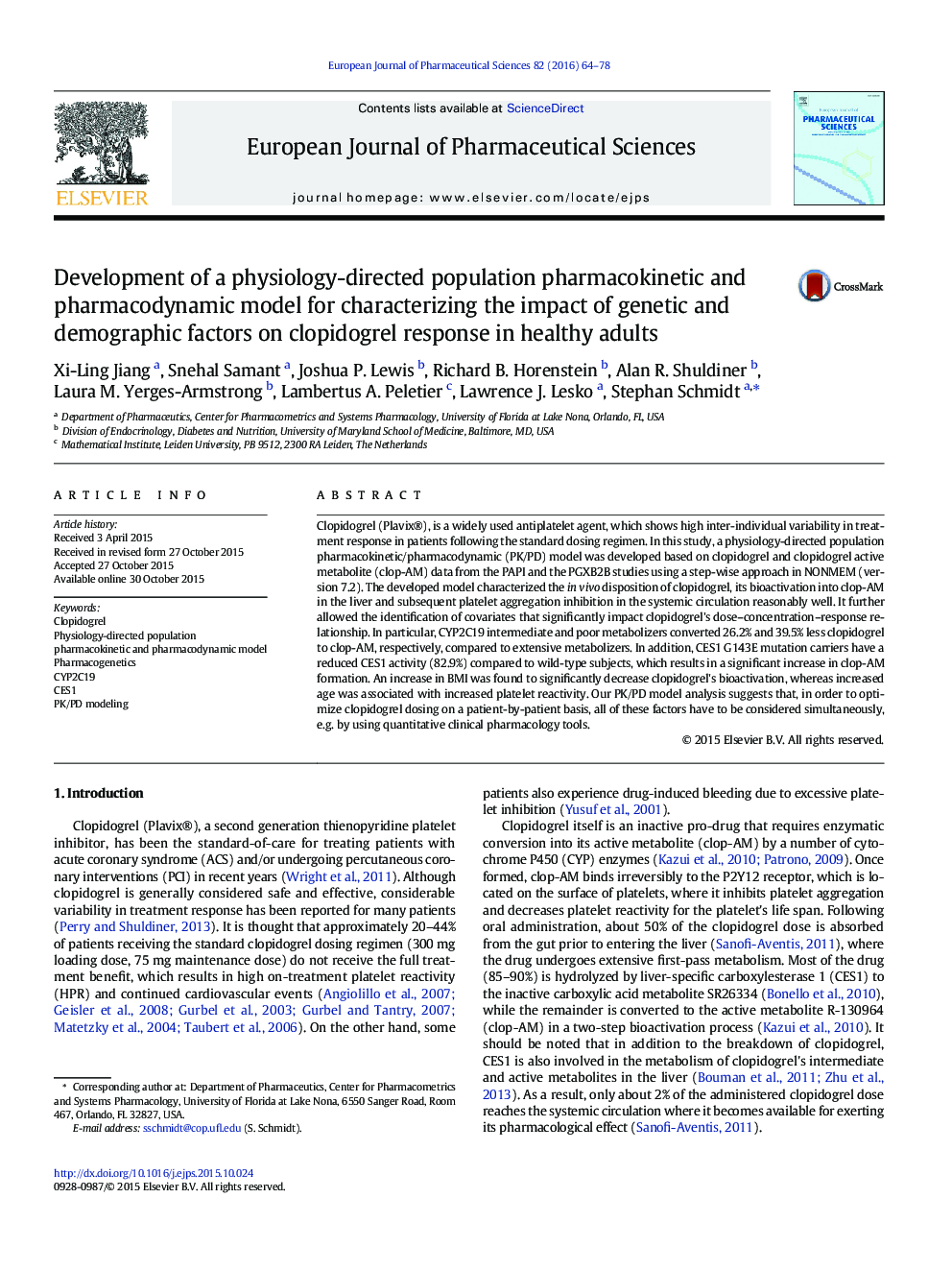| Article ID | Journal | Published Year | Pages | File Type |
|---|---|---|---|---|
| 2480172 | European Journal of Pharmaceutical Sciences | 2016 | 15 Pages |
ABSTRACTClopidogrel (Plavix®), is a widely used antiplatelet agent, which shows high inter-individual variability in treatment response in patients following the standard dosing regimen. In this study, a physiology-directed population pharmacokinetic/pharmacodynamic (PK/PD) model was developed based on clopidogrel and clopidogrel active metabolite (clop-AM) data from the PAPI and the PGXB2B studies using a step-wise approach in NONMEM (version 7.2). The developed model characterized the in vivo disposition of clopidogrel, its bioactivation into clop-AM in the liver and subsequent platelet aggregation inhibition in the systemic circulation reasonably well. It further allowed the identification of covariates that significantly impact clopidogrel's dose–concentration–response relationship. In particular, CYP2C19 intermediate and poor metabolizers converted 26.2% and 39.5% less clopidogrel to clop-AM, respectively, compared to extensive metabolizers. In addition, CES1 G143E mutation carriers have a reduced CES1 activity (82.9%) compared to wild-type subjects, which results in a significant increase in clop-AM formation. An increase in BMI was found to significantly decrease clopidogrel's bioactivation, whereas increased age was associated with increased platelet reactivity. Our PK/PD model analysis suggests that, in order to optimize clopidogrel dosing on a patient-by-patient basis, all of these factors have to be considered simultaneously, e.g. by using quantitative clinical pharmacology tools.
Graphical abstractFigure optionsDownload full-size imageDownload high-quality image (90 K)Download as PowerPoint slide
